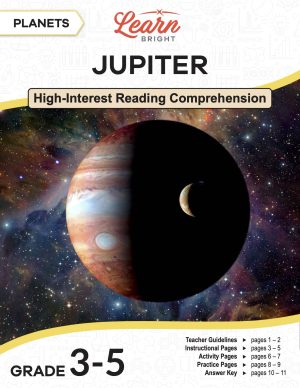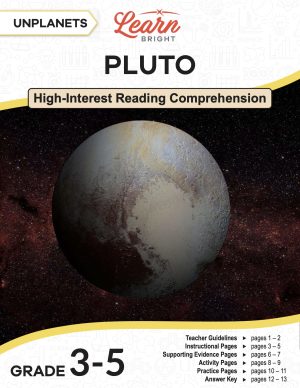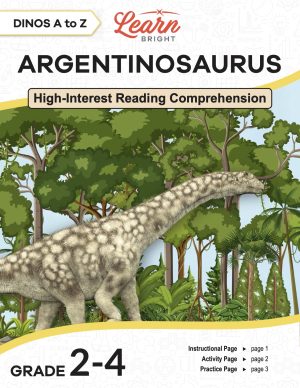Description
What our Basic Measurement lesson plan includes
Lesson Objectives and Overview: Basic Measurement teaches students about length, capacity, and weight. Students engage in interactive activities to help them understand the terms related to each of the units of measurement. At the end of the lesson, students will be able to define and distinguish between length, capacity, and weight and recognize the terms related to each of the units of measurement. This lesson is for students in 1st grade, 2nd grade, and 3rd grade.
Classroom Procedure
Every lesson plan provides you with a classroom procedure page that outlines a step-by-step guide to follow. You do not have to follow the guide exactly. The guide helps you organize the lesson and details when to hand out worksheets. It also lists information in the orange box that you might find useful. You will find the lesson objectives, state standards, and number of class sessions the lesson should take to complete in this area. In addition, it describes the supplies you will need as well as what and how you need to prepare beforehand. For this lesson, the supplies you will need are scissors, glue, the handouts, and various tools for measuring length, weight, and capacity. To prepare for this lesson ahead of time, you can gather the supplies and copy the handouts.
Options for Lesson
Included with this lesson is an “Options for Lesson” section that lists a number of suggestions for activities to add to the lesson or substitutions for the ones already in the lesson. One optional addition to the lesson is to have students walk around outside or in the classroom or school and list items or things that they could measure using each unit discussed during this lesson. You can also teach this lesson alongside another one that teaches students how to use different measurement tools and units.
Teacher Notes
The teacher notes page includes a paragraph with additional guidelines and things to think about as you begin to plan your lesson. It notes that this lesson is ideal as an introduction to different types of measurement. You can use it alongside, or prior to, more detailed lessons about measurement. This page also includes lines that you can use to add your own notes as you’re preparing for this lesson.
BASIC MEASUREMENT LESSON PLAN CONTENT PAGES
Basic Measurement & Length
The Basic Measurement lesson plan includes three pages of content. The lesson begins by defining measurement. It says that we use measurement to learn the length, weight, or capacity of an object. People use measurements every day! For example, when we make a comment about a giraffe being tall, we are referencing their length or height. If we say we can’t carry something, we’re talking about its weight. And if we ask someone to pour more milk into our cup, we’re saying that the cup has the capacity to hold more milk.
The first type of measurement that this lesson discusses is length. Length is how tall, wide, or long something is. Some words that relate to length are width, height, and distance. We measure length in inches feet, yards, or miles. The lesson includes some helpful images related to measuring length. We measure plants, pencils, and snow in inches, and buildings, trees, cars, and people in feet. We measure a football field in yards!
Weight & Capacity
The next type of measurement covered in this lesson is weight, which is how heavy something is. Some other words that relate to weight are mass, bulk, and heaviness. We measure weight in ounces, pounds, or tons. For example, we might measure food and coins in ounces, and pumpkins, books, and weights in pounds. We would measure whales and other large animals, cruise ships, and trains in tons because they are so large!
The final type of measurement discussed in this lesson is capacity, which is the amount that something can either hold or contain, either as a liquid or a solid. We also use the words volume, amount, and size when talking about capacity. We measure capacity in ounces, cups, pints, quarts, or gallons. Some things that we measure in ounces are medicine, soda, spices, and other drinks. We would use cups, pints, or quarts for milk, coffee, and oil. We measure pools, bathtubs, and gas in gallons.
The lesson closes with a note that everything can be measured, from paper (measured in inches) to the ink in a pen (measured in ounces) to the chair you’re sitting in (measured in pounds). It’s important for students to be familiar with different methods and units used in measurement.
BASIC MEASUREMENT LESSON PLAN WORKSHEETS
The Basic Measurement lesson plan includes three worksheets: an activity worksheet, a practice worksheet, and a homework assignment. You can refer to the guide on the classroom procedure page to determine when to hand out each worksheet.
CUT AND PASTE ACTIVITY WORKSHEET
For the activity worksheet, students will first cut out all of the images on the worksheet pages. They will then glue the images in the correct measurement column which shows how each object is measured. For example, they will paste the photo of the car in the length column marked “feet,” as cars are measured in feet.
Students may work in pairs for this activity if you’d prefer.
MATCHING PRACTICE WORKSHEET
The practice worksheet asks students to match words or images with the correct type of measurement. For example, they will match “cups” with “capacity,” as cups measure capacity.
BASIC MEASUREMENT HOMEWORK ASSIGNMENT
For the homework assignment, students will read sentences and circle the correct word. To do this, they must decide which form or unit of measurement works best in different scenarios. This will give students the opportunity to test their understanding of the lesson material.
Worksheet Answer Keys
This lesson plan includes answer keys for the activity worksheet, the practice worksheet, and the homework assignment. If you choose to administer the lesson pages to your students via PDF, you will need to save a new file that omits these pages. Otherwise, you can simply print out the applicable pages and keep these as reference for yourself when grading assignments.










